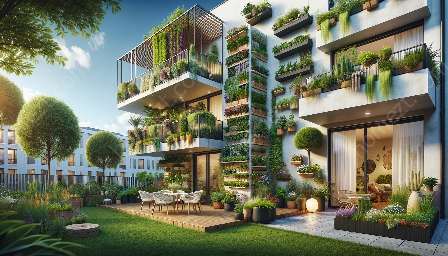Urban gardening offers a unique opportunity for individuals to connect with nature and cultivate flourishing green spaces regardless of the limited room available in yards and patios. Eager gardeners eager can embrace the use of native plants as they offer numerous benefits, from improved biodiversity to reduced maintenance requirements. Let's explore the advantages of incorporating native plants in urban gardening and how they can transform urban environments and outdoor living spaces.
The Environmental Benefits of Native Plants in Urban Areas
Native plants play a vital role in creating sustainable ecosystems within urban areas. By choosing plants that are naturally adapted to the local climate, soil, and environmental conditions, urban gardeners can help conserve water, reduce the need for chemical fertilizers and pesticides, and provide habitats for native wildlife.
One of the primary benefits of native plants is their ability to increase biodiversity in urban areas. They attract and support local pollinators, such as bees and butterflies, which are essential for the pollination of many crops and plants. This, in turn, contributes to the overall health and resilience of urban ecosystems.
Moreover, native plants can improve air quality by absorbing air pollutants and capturing carbon dioxide, helping to mitigate the urban heat island effect and reduce greenhouse gas emissions. Their deep root systems also aid in preventing soil erosion and improving stormwater management, thus contributing to the overall sustainability of urban environments.
Aesthetic and Practical Benefits for Yard and Patio Spaces
When it comes to yard and patio spaces, native plants offer a myriad of aesthetic and practical benefits. Their adaptability to local conditions means they generally require less maintenance, making urban gardening more manageable for busy city dwellers. With minimal intervention, native plants can thrive, requiring less water and fewer chemical inputs, ultimately resulting in lower maintenance costs.
Native plants also contribute to the visual appeal of outdoor spaces, adding natural beauty and creating a sense of place. They can be used to create wildlife-friendly garden designs, attracting birds and beneficial insects while adding color, texture, and seasonal interest to yards and patios.
Additionally, when carefully selected and arranged, native plants can provide natural screening, noise reduction, and privacy, enhancing the functionality and ambiance of urban outdoor living areas. Their ability to withstand local climate extremes and conditions makes them well-suited for challenging urban environments, providing year-round interest and resilience.
Community and Well-being Benefits
Beyond the environmental and aesthetic advantages, native plants in urban gardening contribute to community well-being. They offer opportunities for urban dwellers to connect with their local environment, promoting a sense of stewardship and connection to nature within the urban landscape.
Leveraging native plants in community gardens and shared green spaces fosters social interaction and the sense of belonging, bringing people together around a shared interest in sustainable urban living. By creating attractive, biodiverse landscapes, urban gardening with native plants enhances the overall livability and appeal of neighborhoods and urban areas, contributing to residents' physical and mental well-being.
Conclusion
In summary, the benefits of incorporating native plants in urban gardening extend beyond environmental conservation to encompass practical, aesthetic, and community-oriented advantages. By choosing native plants for yard and patio spaces, urban gardeners can create sustainable, biodiverse oases that enrich both the environment and the quality of urban life. Embracing native plants in urban gardening represents a meaningful and impactful way to enhance the appeal and sustainability of our urban environments, fostering beauty, biodiversity, and community connections.


